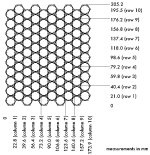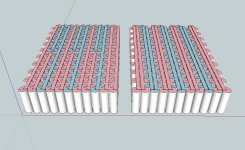powersupply
100 W
Repurposing APC SmartUPS (SUA1000, SMC1000 etc) for home appliance backups (fridge, mom's oxygen machine etc).
Hi all,
My apology, I know this is not directly related to endless, but I couldn't find another place with as much educated and helpful and kind members.
I (re-)searched this subject and found no reliable and actionable information.
Many who ask, some replying the obvious (throwing the question back to the inquirer).
Some claim to have been successful without any demonstration or actual info on how they got there.
UPS's in businesses are normally discarded after a few years (write off after 3 years) and just dumped (including their lead batteries).
Given the availability of Li batteries I truly think it would be great to give those UPS units a second chance of useful service.
So here it is
The actual UPS voltage of my own fully charged and floating SLA batteries is between 27.1 ... 27.5
That results in 3.87 ... 3.93 Volt per Li-ion cell in a 7s configuration.
(I chose li-ion since they are less expensive and meanwhile quite reliable if treated correctly, please.)
If that's not enough, these APC UPS can be programmed to higher charging/floating voltages.
I've read about CV/CC charge profile for Li-ion batteries:
Would the UPS SLA charge output work for Li-ion batteries?
i.e. will the BMS keep matters in check?
Thank you!!
Hi all,
My apology, I know this is not directly related to endless, but I couldn't find another place with as much educated and helpful and kind members.
I (re-)searched this subject and found no reliable and actionable information.
Many who ask, some replying the obvious (throwing the question back to the inquirer).
Some claim to have been successful without any demonstration or actual info on how they got there.
UPS's in businesses are normally discarded after a few years (write off after 3 years) and just dumped (including their lead batteries).
Given the availability of Li batteries I truly think it would be great to give those UPS units a second chance of useful service.
So here it is
The actual UPS voltage of my own fully charged and floating SLA batteries is between 27.1 ... 27.5
That results in 3.87 ... 3.93 Volt per Li-ion cell in a 7s configuration.
(I chose li-ion since they are less expensive and meanwhile quite reliable if treated correctly, please.)
If that's not enough, these APC UPS can be programmed to higher charging/floating voltages.
I've read about CV/CC charge profile for Li-ion batteries:
Would the UPS SLA charge output work for Li-ion batteries?
i.e. will the BMS keep matters in check?
Thank you!!







